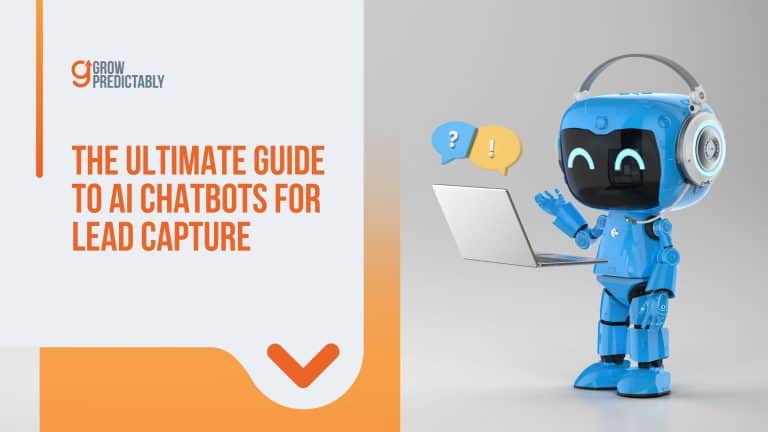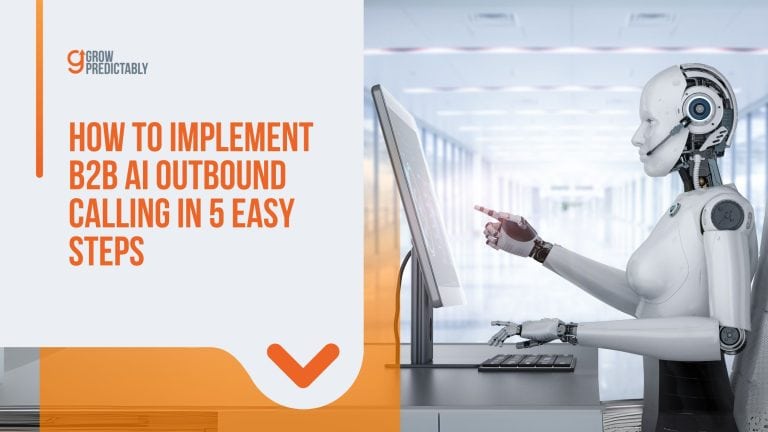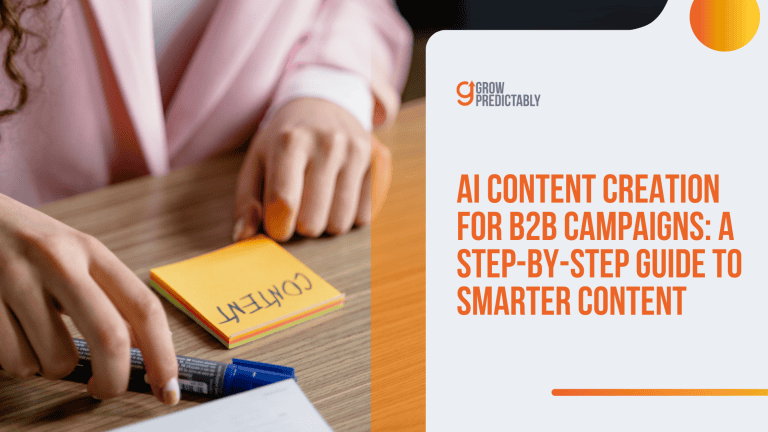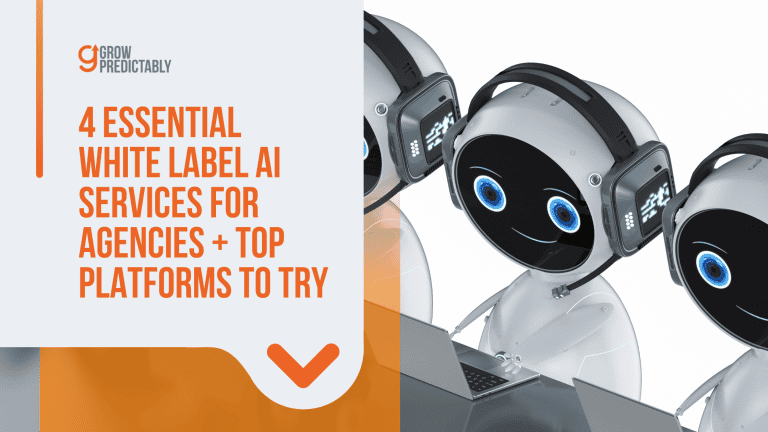Will AI Make My Coaching Business Feel Impersonal: What to Know
You built your coaching business on real human relationships, not endless admin and automation headaches.
Still, with AI making waves everywhere, the question looms: will AI make my coaching business feel impersonal?
The reality is, integrating AI into your workflow can actually make your practice feel more human—giving you time to focus on breakthrough conversations, deepen client connections, and scale your impact without sacrificing quality.
The right AI tools act as your tireless invisible assistant, automating scheduling, tracking client progress, and generating content that amplifies your unique expertise.
Your clients expect more than ever.
Your roadmap to thriving in an AI-powered coaching landscape starts now—let’s turn these high-impact strategies into your new competitive edge.
TL;DR
AI won’t make your coaching business feel impersonal if integrated thoughtfully. By customizing AI to reflect your unique style and focusing on strategic implementation, you can enhance efficiency while maintaining a personal touch for your clients.
KEY TAKEAWAYS
- Conduct a workflow audit to identify repetitive tasks that can be automated; focus on administrative tasks like scheduling and follow-ups first.
- Develop an AI style guide using your content to ensure all AI-generated communication reflects your unique voice and coaching style.
- Implement AI in layers, testing with a small client group to gather feedback and adjust your approach to maintain personalization and trust.
The Myth: Is AI the End of Personal Coaching?
Your clients aren’t afraid of robots.
They’re afraid you’ll become one.
The panic around AI replacing coaches misses the real issue completely.
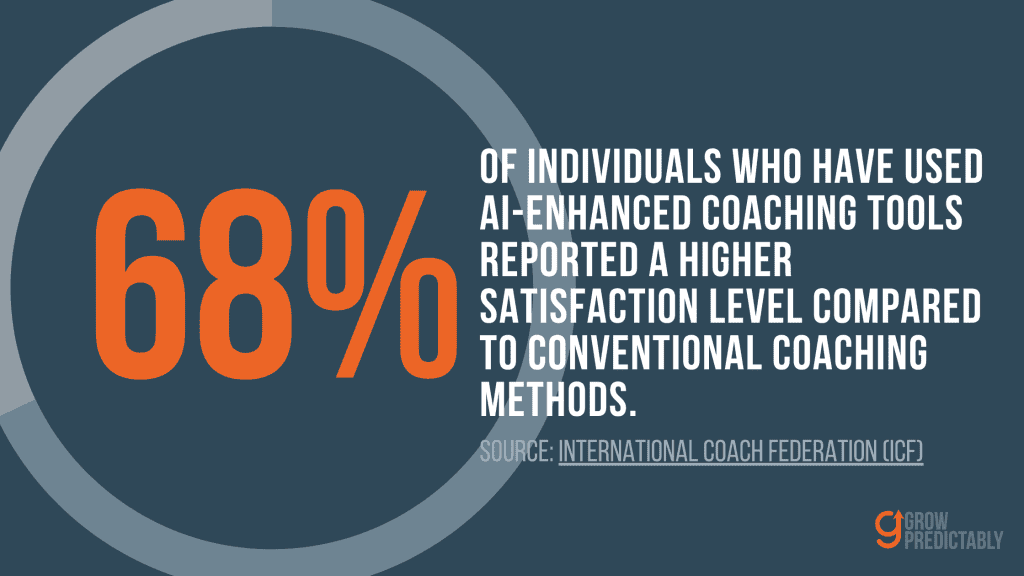
Coaches find that integrating AI tools helps them streamline client management and support, without losing the personal connection.
The obsession with maintaining “human touch” creates a false choice between technology and connection.
The human element remains central to effective coaching, even as technology advances.
Your clients don’t care about your philosophical stance on artificial intelligence.
They care about results.
When you spend energy defending your humanity instead of leveraging AI to become more effective, you’re solving the wrong problem entirely.
If you do average work for average pay, AI is going to be able to do it cheaper than you.”
Seth Godin
The Real Fear Isn’t Technology—It’s Irrelevance
Most coaching fears stem from a fundamental misunderstanding of what clients actually want.
They don’t hire you because you’re human.
They hire you because you get them results faster than they can get them alone.
The moment another option delivers better outcomes, your humanity becomes irrelevant.
Consider what happens when coaches resist AI integration:
- Slower client progress – Manual tracking and analysis delays insights that could accelerate breakthrough moments
- Limited scalability – One-on-one time constraints prevent serving clients at the depth and frequency they need
- Reduced precision – Human memory and bias create gaps in pattern recognition that AI easily identifies
- Higher costs – Inefficient processes force higher prices, making coaching accessible to fewer people
Many coaches struggle with manual follow up and other time-consuming processes, which can negatively impact conversion rates and overall client satisfaction.
The market doesn’t reward good intentions.
With 4.38 million practicing coaches worldwide, clients have unlimited options.
The ones who survive will be those who deliver superior results, not superior humanity speeches.
Client Expectations Drive Everything
Your clients’ expectations weren’t shaped by your coaching philosophy.
They were shaped by Netflix recommendations, GPS navigation, and Amazon’s same-day delivery.
They expect personalized, immediate, and continuously improving experiences.
Fighting this expectation is like arguing with gravity.
The “robotic” fear assumes AI makes interactions less human.
The opposite is true.
When AI handles data analysis, scheduling, and progress tracking, you spend more time on what actually matters—the breakthrough conversations, the emotional support, and the strategic guidance only humans can provide.
AI tools can also analyze client behavior to personalize outreach and engagement throughout the coaching journey, ensuring communication is relevant and timely.
Smart coaches understand the distinction.
They use AI to become more human, not less.
They automate the mechanical parts of coaching so they can focus entirely on the transformational parts.
The result is deeper connections and better outcomes, which is exactly what clients pay for.
AI enables coaches to deliver personalized attention at every stage of the coaching journey, supporting each client’s unique path to growth.
What AI Really Does in Coaching
AI doesn’t coach your clients.
It handles everything that isn’t coaching so you can actually coach.
The difference matters because most coaches waste hours on tasks that could be automated in minutes.
Studies show AI can improve white-collar productivity by up to 40%, but only when applied to the right functions.
Think of AI as your invisible assistant that never sleeps, never forgets, and never gets tired of repetitive work.
It transforms the backend operations that eat your time and drain your energy.
When implemented correctly, you spend 80% more time in actual coaching conversations instead of managing logistics and data entry.
The practical applications break down into four main categories:
- Automated scheduling and calendar management – Eliminates back-and-forth emails, handles rescheduling, and integrates with multiple time zones automatically
- Progress tracking and data analysis – Monitors client metrics, identifies patterns you’d miss, and surfaces insights before problems become crises
- Personalized content creation – Generates customized action plans, homework assignments, and check-in prompts based on individual client needs
- Session documentation and follow-up – Transcribes meetings with 95% accuracy, creates summaries, and tracks action items without manual note-taking
- CRM systems integration – CRM systems like HubSpot and Pipedrive connect with scheduling platforms and email marketing tools to automate lead generation, streamline workflow automation, and ensure clients receive the right support at every stage.
The goal isn’t to replace human judgment. It’s to eliminate everything that prevents you from using it.
When AI handles session notes, you’re fully present during conversations.
When it tracks progress automatically, you spot breakthrough opportunities faster.
When it manages scheduling, you never lose momentum between sessions. When these systems run smoothly, you can focus on delivering high-value coaching.
AI Tools for Coaches: What’s Out There and How to Choose
The coaching industry is experiencing a wave of innovation, with AI tools transforming how coaches operate and connect with clients.
Today’s AI tools are designed to handle repetitive tasks, streamline client onboarding, and deliver coaching insights that help you focus on what matters most—meaningful client interactions.
Whether you want to automate client communication, create content, or track client progress, there’s an AI tool tailored to your needs.
Tools like Notion AI can help you generate personalized resources and session notes in seconds, while Zapier connects your favorite apps to automate workflows behind the scenes.
For managing client relationships and communications, platforms like HubSpot CRM offer powerful automation features that keep your coaching business running smoothly.
When choosing the right AI tool, start by identifying your biggest time drains.
Do you spend hours creating content, sending follow-ups, or organizing client data?
Look for tools that address those specific pain points.
The best AI tools amplify your expertise, freeing you to deliver more personalized coaching and deeper client connections.
By integrating the right AI solutions, coaches can optimize their workflows, serve more clients, and focus on delivering the unique value only a human coach can provide.
The result?
More time for coaching, less time on admin, and a business that grows without losing its personal touch.
The Role of AI Chatbots in Client Engagement
AI chatbots are quickly becoming a game changer for coaches who want to elevate client engagement without sacrificing the personal connection that sets their practice apart.
These smart assistants can automatically send follow-up emails, schedule sessions, and provide instant support—ensuring your clients feel guided and supported at every step of their journey.
By integrating AI chatbots into your coaching practice, you can offer personalized guidance around the clock, even when you’re not available.
This means clients get timely answers and encouragement, boosting client retention and satisfaction.
Human coaches can then focus on high-value conversations and relationship building, while chatbots handle routine follow ups and information requests.
The real power of AI chatbots lies in their ability to help you scale your business.
You can serve more clients, maintain consistent communication, and deliver a polished, professional experience—without losing the human touch that makes coaching effective.
With the right setup, AI chatbots support your business growth and client success, all while keeping your focus on what you do best: coaching.
Client Onboarding with AI: Creating a Seamless First Impression
First impressions matter, and client onboarding is your chance to set the tone for a successful coaching relationship.
AI-powered client onboarding workflows ensure every new client receives a smooth, professional, and welcoming experience from day one.
With AI tools like Typeform, Zapier, and Mailchimp, you can automate the entire onboarding process—sending personalized welcome emails, collecting intake information, and scheduling initial sessions without missing a beat.
This not only saves you valuable time but also guarantees that every client receives the same high standard of care, no matter how busy your coaching business gets.
Automated onboarding reduces the risk of missed steps or delays, helping you build trust and credibility right from the start.
By leveraging AI to handle the logistics, you can focus on connecting with your clients and laying the foundation for a strong, lasting coaching relationship.
The result?
Higher client retention, more referrals, and a reputation for excellence that sets your business apart.
Coaching Insights with AI: Smarter Progress Tracking
AI is revolutionizing progress tracking in coaching, giving you smarter, more actionable insights into your clients’ journeys.
With AI-powered tools, you can automate the collection and analysis of client data, making it easier to spot patterns, track milestones, and deliver personalized guidance that drives real results.
Instead of manually reviewing notes or spreadsheets, AI can highlight areas where clients are excelling or struggling, suggest next steps, and even generate customized coaching plans.
This allows you to refine your coaching style, set realistic goals, and celebrate client achievements with confidence.
By embracing AI-driven coaching insights, you can focus your energy on delivering impactful coaching sessions and building deeper relationships.
The technology handles the data, while you provide the expertise and personal attention that transforms lives.
In the end, smarter progress tracking means more meaningful coaching, better outcomes, and a practice that’s always evolving to serve your clients at the highest level.
Where AI Falls Short (And Why You Still Matter)
AI can recognize when someone types angry words, but it can’t feel the frustration behind them.
It knows crying usually means sadness, but it misses the relief that sometimes comes with tears.
AI has a limited and formulaic approach that lacks the essential human qualities of empathy, intuition, and emotional connection, which matters more than most coaches realize.
Empathy is connecting to the emotions that underpin an experience.”
Brené Brown
Your client’s story isn’t just data points and patterns.
It’s years of disappointment, small victories, and moments that shaped their identity.
AI processes their words and suggests responses based on probability.
You hear the pause before they mention their father and understand why this goal really matters to them.
The gap becomes obvious in critical coaching moments:
- Trust-building conversations – Clients share vulnerable information when they feel truly seen and understood, not when they receive algorithmically appropriate responses
- Crisis intervention – Mental health emergencies require immediate human judgment about safety and next steps that AI cannot reliably make
- Breakthrough realizations – The moment when someone connects their childhood experience to their current limiting belief happens through human intuition, not pattern matching
- Complex emotional states – When clients experience conflicting emotions simultaneously, they need someone who can navigate ambiguity, not binary classifications. Understanding a client’s unique communication style is essential for supporting them through these moments, as it allows coaches to respond with empathy and tailored guidance.
Research confirms that AI’s lack of empathy and emotional intelligence make human coaches irreplaceable, particularly in situations requiring nuanced understanding.
AI might suggest the right technique, but it can’t read the micro-expressions that tell you when to pivot completely.
Practical Next Steps: How to Start Integrating AI Without Losing Your Personal Touch
Most coaches overcomplicate AI integration because they try to fix everything at once.
This creates chaos, confuses clients, and usually ends with abandoning the technology altogether.
The coaches who succeed start with one task, master it completely, then expand systematically.
Implementing one automation at a time is the most effective way to avoid overwhelm and ensure each process is optimized before moving on.
For example, automating follow-up processes can save you from manually sending follow ups, freeing up time for more meaningful work.
The biggest mistake is diving into AI without understanding your current workflow first.
You can’t optimize what you haven’t measured.
Before touching any AI tool, spend three days tracking exactly how you spend your time.
Write down every task, every email, every administrative minute.
The patterns will show you exactly where AI can make the biggest impact.
1. Start With a Workflow Audit
Time tracking reveals the truth about where your energy goes.
Most coaches discover they spend 40-60% of their time on tasks that require zero coaching expertise.
These repetitive activities are your AI opportunities, but only after you identify them clearly.
Focus your audit on four key areas:
- Content creation – Emails, worksheets, and resources you recreate or slightly modify for different clients
- Administrative work – Scheduling, follow-ups, and data organization that follows predictable patterns
- Client support – Similar questions from different clients that have standard answers
- Data analysis – Progress tracking and pattern recognition that could be automated
Each task gets a simple test: “Does this truly need my personal touch, or could AI handle it while I focus on deeper connection?”
The audit isn’t about judging your current system—it’s about finding where AI eliminates friction so you spend more time in actual coaching conversations.
2. Choose One Task and Master It
Pick the single most time-consuming, repetitive task from your audit and focus on that alone for 30 days.
Focusing on one area at a time allows you to maximize results and minimize confusion.
Your first AI task should meet three criteria: it takes significant time, follows a clear process you can explain, and doesn’t require emotional intelligence.
Session recap emails work perfectly.
Scheduling coordination is another safe starting point.
The temptation is to automate everything simultaneously.
Resist this urge completely.
Mastery of one area builds confidence and reveals patterns you’ll use for future integration.
3. Build Your Personal AI Style Guide
Your coaching style is your competitive advantage.
It’s how clients recognize your voice in their head months after working with you.
AI doesn’t replace this uniqueness—it amplifies it when used correctly.
The key is treating AI as your invisible production assistant, not your creative director.
Most coaches worry that AI will make them sound like everyone else.
The opposite happens when you understand how to program AI with your specific approach.
The difference between generic and authentic AI integration comes down to customization:
- Generic coaches use AI outputs directly without modification
- Smart coaches use AI as raw material filtered through their expertise and personality
- Successful coaches create systems that reflect their unique methodology rather than copying templates
40% of coaches are planning to incorporate AI tools to enhance their services, but your signature style becomes the lens through which all AI assistance gets processed.
This customization separates coaches who thrive with AI from those who become irrelevant.
Start by feeding your existing content into AI tools to create a baseline:
- Email archives – Your actual client communications show your natural tone and problem-solving approach
- Session transcripts – Capture how you guide conversations and ask breakthrough questions
- Client materials – Worksheets and resources reveal your teaching methodology and explanation style
- Marketing content – Blog posts and social media demonstrate your public voice and key messages
The customization process involves four key areas:
- Language patterns – Train AI to use your preferred terminology, metaphors, and explanation styles instead of defaulting to formal coaching jargon
- Client interaction preferences – Program your approach to difficult conversations, celebration methods, and accountability styles
- Content frameworks – Embed your proprietary methodologies so AI suggestions align with your proven systems
- Personal boundaries – Set parameters for what topics AI can address and which require your direct intervention
This documentation step determines whether AI enhances your brand or dilutes it.
Feed this information to your chosen AI tool before generating any client-facing content.
The result should sound unmistakably like you, just more efficient.
4. Use a Three-Layer Implementation Framework
The most effective coaches use a systematic approach that maintains control while maximizing efficiency.
Each layer serves a specific purpose and requires different levels of human oversight:
- Layer One: Full automation – Routine tasks like scheduling, basic follow-ups, and data entry that require zero personalization
- Layer Two: AI-generated drafts – Content you customize including session summaries, homework assignments, and check-in messages
- Layer Three: Human control – Activities you handle completely like breakthrough conversations, crisis situations, and strategic planning
Research shows that AI can automate up to three hours of daily activities by 2030, but the hours you save mean nothing if the output doesn’t represent your standards.
This layered approach ensures AI enhances your signature approach rather than diluting it.
5. Test Small and Gather Real Feedback
Run every AI integration as a limited experiment first.
Choose 2-3 clients for your pilot test and be completely transparent about using AI for specific tasks.
This isn’t just about honesty—it’s about setting clear expectations from the start.
Your onboarding conversation determines whether AI enhances your relationship or undermines it.
Explain specifically which tasks AI handles and which remain exclusively yours.
Clarify when they’ll hear from you personally versus automated systems.
Learn their communication preferences for feedback, accountability, and support between sessions.
This transparency prevents confusion and builds trust that enables vulnerability.
After two weeks, ask direct questions about their experience.
Did the AI-generated content feel personal?
Were response times helpful?
Do they feel more or less connected to you?
Use simple assessment questions like “How supported do you feel between our sessions?” and “When you get messages from my system, do they feel helpful or generic?”
Their answers determine whether you expand the integration or adjust your approach.
Your AI Integration Checklist
Week 1: Foundation
- Complete 3-day time audit documenting all tasks
- Identify top 3 repetitive, non-expertise tasks
- Select one specific task for pilot integration
- Choose appropriate AI tool for chosen task
Week 2: Setup
- Create personal style guide with phrases, tone, and methodology
- Input style guide into chosen AI tool
- Generate first AI-assisted content sample
- Review and refine output for authenticity
Week 3: Testing
- Select 2-3 clients for transparent pilot test
- Set clear expectations about AI use during onboarding
- Implement AI integration for chosen task only
- Monitor client responses and engagement levels
- Track time saved versus quality maintained
Week 4: Evaluation
- Gather direct feedback from pilot clients using specific questions
- Assess whether clients feel “seen” and valued despite AI use
- Calculate actual time savings achieved
- Establish ongoing check-in schedule for human connection assessment
- Decide whether to expand or adjust approach
This systematic approach prevents the overwhelm that kills most AI integration attempts.
Master one task completely before moving to the next.
Benefits: What AI Can Unlock for Your Business
Most coaches spend 60% of their time on tasks that aren’t coaching.
Scheduling, note-taking, progress tracking, and administrative work eat hours that could generate revenue.
AI eliminates this time drain completely, turning your biggest bottleneck into your biggest opportunity for growth.
The numbers tell the story.
Organizations using AI report 29% higher revenue growth compared to their peers who haven’t implemented it yet.
For coaches, this translates directly to serving more clients at higher rates without burning out.
You stop trading time for money and start building a business that scales beyond your personal capacity.
The transformation happens in three critical areas.
First, your calendar opens up for deep coaching work instead of administrative tasks.
With AI automation handling routine work, you have more time to serve clients through deeper engagement and personalized support.
Second, your clients receive consistent support even when you’re not available.
Third, you can handle more clients without compromising the quality that built your reputation.
Reclaiming Your Calendar for High-Value Work
Every hour you spend on scheduling is an hour not spent coaching.
Every minute documenting session notes is a minute not connecting with clients.
AI handles these mechanical tasks instantly, giving you back 15-20 hours per week for activities that actually generate revenue.
The time savings compound quickly across multiple areas:
- Session management – Automated booking, rescheduling, and reminder systems eliminate back-and-forth communication
- Client communication – AI handles routine check-ins, progress updates, and standard questions between sessions
- Documentation – Session summaries, action items, and progress reports generate automatically without manual input
- Content creation – Personalized homework assignments, reading recommendations, and follow-up materials scale effortlessly
This isn’t about working less.
It’s about working on what matters most.
When AI handles the routine work, you spend entire days in coaching conversations, strategic planning, and business development.
The result is higher income and better client outcomes simultaneously.
Delivering Consistent Client Support
Your best clients want more than weekly sessions.
They want guidance when they’re stuck on Tuesday morning, encouragement when they doubt themselves on Friday night, and accountability when they’re tempted to skip their commitments.
AI makes this level of support possible without requiring you to be available 24/7.
The coaching market is projected to reach $6.25 billion in 2024, driven partly by clients’ expectations for immediate, personalized support.
AI bridges the gap between sessions with customized check-ins, progress celebrations, and gentle course corrections that keep clients moving forward.
Scaling Without Sacrificing Quality
The traditional coaching model forces you to choose between growth and intimacy.
More clients means less personal attention.
Higher revenue requires longer hours. AI breaks this trade-off by handling the volume while preserving the personal touch that makes coaching effective.
You maintain deep relationships with each client while serving three times as many people.
The secret is that AI amplifies your expertise rather than replacing it.
Clients still get your insights, your frameworks, and your personal attention during sessions.
They just also get consistent support, faster responses, and more thorough progress tracking between meetings.
FAQs
The Future is Hybrid—And That’s a Good Thing
The coaching industry isn’t heading toward a choice between human connection and artificial intelligence.
It’s evolving toward a partnership where both amplify each other’s strengths.
The coaches who understand this win everything.
The ones who resist it become irrelevant.
AI handles the mechanics so you can focus on the magic.
Your wisdom, experience, and heart remain irreplaceable.
Technology just makes them more powerful.
The coaches who embrace this partnership will dominate the next decade.
The ones who fight it will be forgotten.
Start with one task.
Master it completely.
Then expand systematically.
Your clients are waiting for the best version of you that AI can help create.



